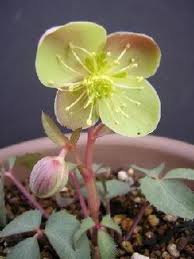Heliotropium
These are tender, bushy plants that grow 1 to 4 feet high. Their leaves are elliptic or oblong to lanceolate and they grow up to 3 inches long. They produce pretty, wonderfully fragrant flowers in clusters up to 8 inches across. They may be deep blue-violet to purple, lavender, or almost white.
Pot Cultivation
Heliotropium needs a minimum winter temperature of 45 degrees and soil made of two parts loam and one part leaf mold, with quite a bit of sand added. Repotting is done in March or April. Plants growing in large tubs or pots don't need to be repotted every year. They can be kept growing actively by top dressing them in the spring. Pruning large plants consists of cutting back the shoots of the past summer's growth within 2 or 3 inches of the base in February. They need a lot of water throughout the summer and liquid fertilizer once in a while, but during the winter, water is only given when the soil is fairly dry.
Propagation
Seeds are sown in pots of sandy soil in a greenhouse in early spring, in a 70-degree temperature. The seedlings are planted individually in 3-inch pots. Cuttings may also be taken to produce plants suitable for 4 or 5 inch pots or for summer bedding. The cuttings are taken yearly in spring or fall. Those rooted in the fall make the largest plants. Flowerless side shoots, 2 to 3 inches long, are detached, trimmed with a sharp knife and inserted in a bed of sand in the greenhouse. The temperature should be 50 to 55 degrees. Shade them from direct sun and don't keep them in a closed atmosphere because this will cause them to damp-off. When they've formed roots, they are potted in 3-inch pots and in early spring, 5-inch pots. Pinch the top of the main shoot and side shoots when they're 5 or 6 inches high to encourage bushiness.
 |
| H. arborescens |
VARIETIES
- H. arborescens;
- H. corymbosum.





